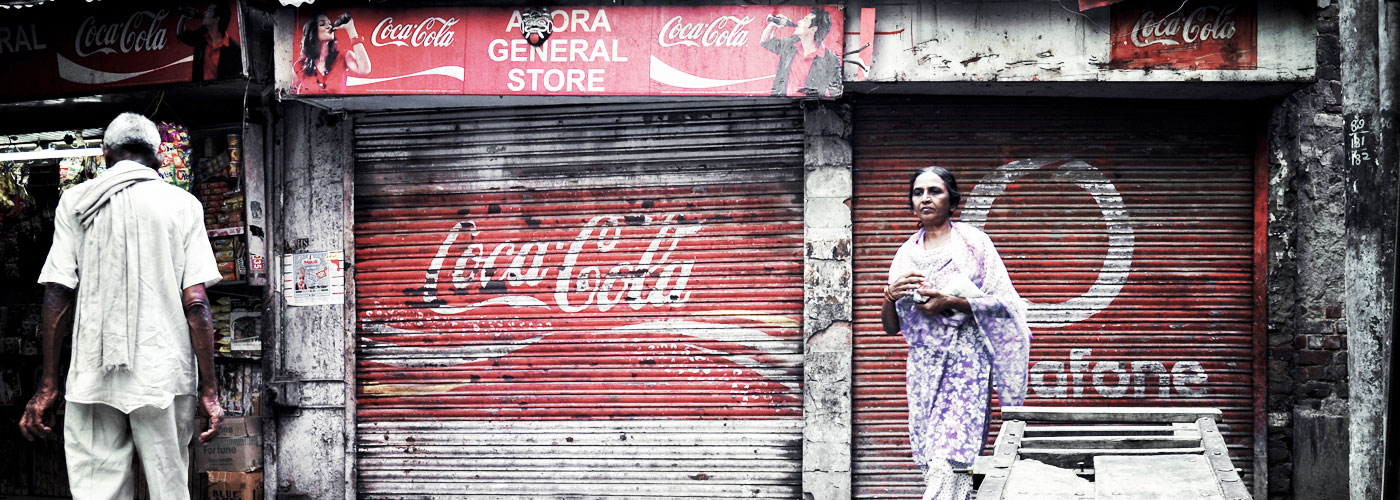Six years ago, General Motors, the biggest, most powerful corporation in the world, was brought to its knees by failing to react quickly and effectively to competition from Japanese imports, which were smaller, more fuel efficient, and cheaper cars.
Companies like Walmart, Coca-Cola, and Microsoft will soon face the same do-or-die crossroads General Motors did if they don’t react quickly and effectively to the challenge of earning attractive profits at scale from emerging markets. This will require nothing less than a revolution in how businesses currently design, price, market, and distribute their products. I plan to spend the rest of my life helping foment that revolution.
It’s time for a revolution in how corporations design, price, market and distribute their products. Tweet This Quote
Thirty million people shop at Walmart every day. But, there are three billion people in the world who will never set foot inside a Walmart store. They include 2.6 billion potential customers who live on less than two dollars a day. Most live in rural areas in developing countries and earn their livelihoods from one or two acre farms.
Many more live in urban slums and live on what they can earn from informal enterprises, like small shops selling consumer items or tailoring enterprises. I’ve had long personal conversations over the past 30 years with more than 3,000 of these customers who are routinely bypassed by existing markets, and they have become my teachers and my friends.
Coca-Cola sells what amounts to aspirational branded fizzy sugar-water for about 25 cents a bottle in villages all over India. In those same villages, 50 percent of the children are malnourished. What would happen to Coca-Cola if a well-financed Chinese company started selling a nutritious soft drink at a nickel a pop in millions of villages around the world? I believe Coca-Cola could quickly find itself in the same position General Motors faced four years ago.
The opportunities to create profitable businesses serving 3 billion bypassed customers are almost limitless. Tweet This Quote
The Gates Foundation has helped millions of people move out of poverty, and improved the health and education of millions more. But as far as I know, Microsoft, the parent company, does not make a single product that sells to the 2.6 billion people in the world who live on less than $2 a day.
The opportunities to create profitable businesses serving three billion bypassed customers are almost limitless. For example, there are a billion people who will never connect to electricity. That’s about the same as the total population of the United States and Europe combined. There are another billion people who don’t have access to safe drinking water. Many of them get sick and some of them die because of it.
Why aren’t existing businesses successfully involved in emerging markets? There are three main reasons:
- They don’t see a profit in it.
- They don’t have a clue how to design the radically affordable products and services that poor people need.
- They don’t know how to design and operate profitable last-mile supply chains.
Future corporations will remain competitive by creating vibrant new markets serving 2 dollar a day customers at scale. Tweet This Quote
Three key practical strategies need to be incorporated by businesses serving 2 dollar a day customers:
- Small margin x large volume = attractive bottom line profits. Supermarkets used this formula to replace mom and pop grocery stores, and Walmart improved on it. For emerging markets, it’s really the Walmart strategy x 100.
- Design for radical affordability. A movement, called design for the other 90 percent, gained a lot of momentum. It means learning to design things that are affordable enough for people who live on less than 2 USD a day and that are also income generating.
- Implement profitable last-mile supply chains. Spring Health, the company I started with my partners in India, will, if successful, create a model platform for profitable last mile supply chains to small rural villages in India.
Designing for the other 90 percent means things that are radically affordable and income generating. Tweet This Quote
The mission of Spring Health is to sell safe drinking water at scale to people who don’t have access to it now. There are some 300 million people in eastern India alone that don’t have access to safe drinking water. Most of them live in small villages with 100 to 300 families, and those villages have little in the way of markets. But every one of these small villages has three or more mom-and-pop shops. They sell everything from cigarettes to soap to candy to cookies and all kinds of consumable household items.
This design revolution will create millions of jobs and help more than a billion people move out of poverty. Tweet This Quote
What Spring Health did is build a 3,000 liter cement tank for about 100 USD next to each shop, purifying the water in it using a radically affordable water purifier liquid. The shopkeeper sells the purified water at a cost of less than half a cent a liter to people in the village. Our customers, most of whom live on less than 2 dollars a day, report they are experiencing a major drop in illnesses and medical bills—each family estimates they pay between 25 and 250 USD a year for medicines to stop diarrhea, visits to clinics and doctors, electrolyte replacements, IVs, and hospital stays to treat the illnesses they get from drinking bad water.
I believe there are thousands of opportunities, like the one Spring Health saw in India, for creating new markets and new companies to serve the three billion customers in the world who are bypassed by current markets. It will take nothing less than a revolution to accomplish this. But the outcome of this revolution will be to create millions of new jobs, help more than a billion people move out of poverty, and take a giant step toward ending environmental imbalance on the planet.
Paul’s TEDxMileHigh Talk in Denver, Colorado
A version of this post originally published on UNREASONABLE.is in December 2013. It has been updated and reposted to inspire further conversation.



